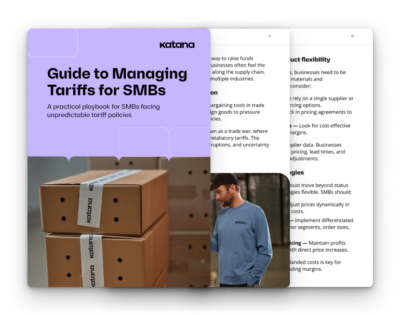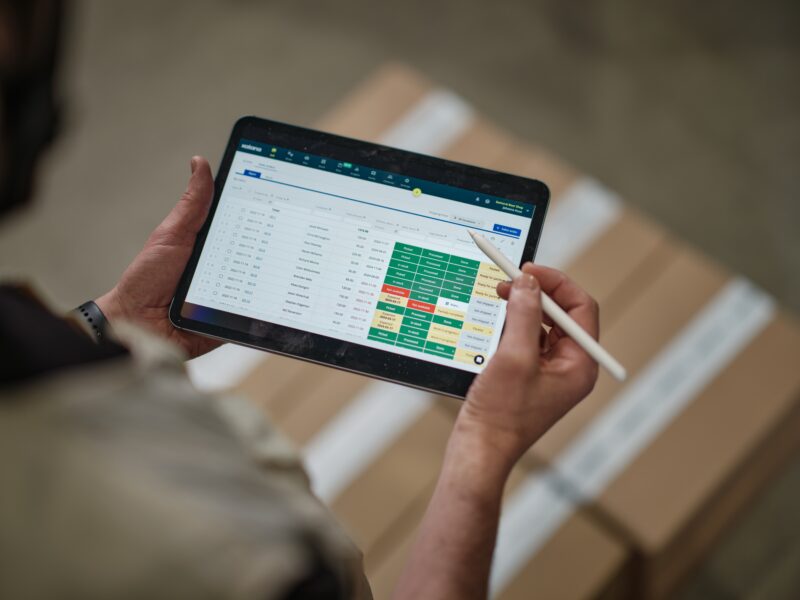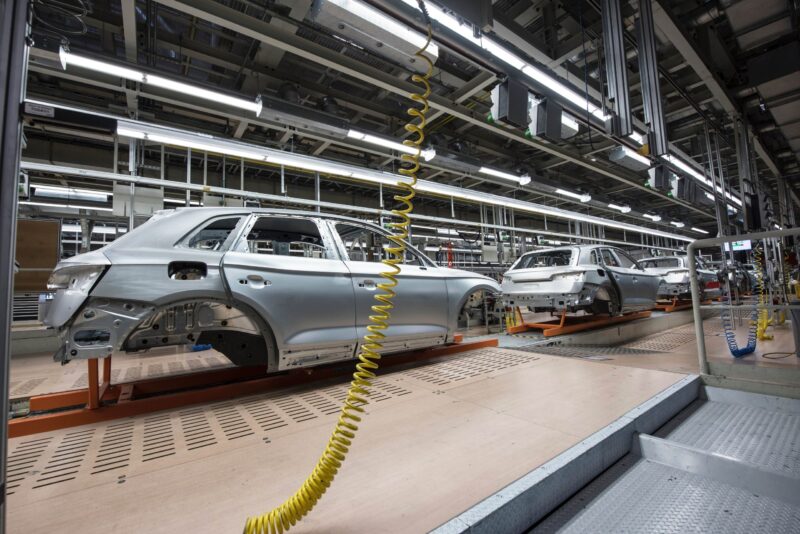How tariffs and shifting supply chains are shaping manufacturing in 2025
In 2025, new tariffs and supply chain shifts are forcing manufacturers to rethink costs, pricing, and sourcing. Some sectors adapted well, while others face tighter margins and tough decisions.

Henry Kivimaa

The manufacturing industry closed out 2024 under considerable pressure, hit by mounting trade barriers and evolving supply chain disruptions. Now, as 2025 gains momentum, it’s clear that manufacturers must stay sharp, responding to these changes while balancing rising costs and operational challenges.
New tariffs leave manufacturers scrambling
Early 2025 brought a fresh wave of tariffs that left manufacturers juggling higher expenses almost overnight. The US government imposed a hefty 25% duty on imports from Mexico and Canada — except for Canadian oil, which was hit with a smaller 10% levy — and tacked on another 10% tariff for goods coming from China.
The tariffs on Mexican and Canadian imports have been delayed until March 4, 2025, providing a brief window for manufacturers to adjust their strategies.
These moves aimed to address trade imbalances, but they had a more immediate effect: bumping up costs on raw materials and components for U.S. manufacturers. Sectors like automotive manufacturing, where parts cross borders multiple times, felt the squeeze the hardest. The price per vehicle could climb by as much as $6,250 due to these tariffs.
At Katana, we cater to small and medium-sized businesses (SMBs) that often depend on overseas suppliers. Many also sell their products internationally, so these tariff shifts can hit their bottom line hard. With over $2.5 billion in annual sales volume running through Katana’s platform, we get a front-row seat to what SMBs are thinking, adjusting, and planning to stay afloat during unpredictable times.
How different industries are weathering the storm
Different industries are feeling the effects of tariffs and shifting supply chains in unique ways. While some have managed to adapt and even thrive, others are struggling with tighter margins, stockouts, and changing consumer behavior. Here’s a closer look at how key sectors are responding.
Your guide to managing tariffs
Shifting tariffs create uncertainty and disrupt planning, pricing, and supply chains for SMBs. This practical guide explains how tariffs work, their ripple effects, and what businesses can do to stay competitive.

Food and beverage
Food and beverage producers spent much of 2024 dealing with higher costs of imported ingredients and packaging materials, forcing many to rethink their pricing. We saw price hikes across the board, but even that wasn’t enough to protect profit margins. Many brands leaned into tighter inventory management, which often backfired, leaving shelves bare due to understocking. In industries with slim profit margins, even a small overstock can spell trouble.
Electronics and appliances
In contrast, electronics and appliances thrived in 2024 despite the rising cost of imported components. Demand remained strong, and some computer manufacturers even saw their margins grow. Strategic cost management and steady consumer interest helped this sector emerge as one of the few bright spots.
Luxury goods
High-end categories like footwear and perfumes raised prices by up to 50% and 25%, respectively, to keep up with increasing costs. But 2025 could bring trouble. As shoppers grow more price-conscious, demand for luxury goods may dip, leaving brands to rethink their strategies. Cosmetics, in particular, could struggle with both rising costs and frequent stockouts.
Sportswear
An interesting shift played out in the sportswear world at the end of 2024. Manufacturers flooded the market with discounts to clear stockpiles during what should’ve been a peak sales period. Holiday sales and winter collection rollouts saw deep price cuts, which benefited consumers but left brands with thinned-out margins. This year, the focus will be on stabilizing pricing and clearing the excess inventory they stockpiled in January.
How are you adapting?
Check out Katana’s Tariff Hub for practical tips, real-world insights, and strategies to help your business stay resilient and adapt in this constantly shifting economy.

Supply chains are getting a major shake-up
Tariffs aren’t just about added costs — they’ve forced manufacturers to rethink their supply chain strategies. To dodge US and EU tariffs, many Chinese companies shifted operations to Vietnam, Thailand, and Malaysia. Vietnam alone saw Chinese investment soar by 80% in 2023, as manufacturers relocated or rebranded goods to capitalize on more favorable trade terms.
While this shift offers some relief, it also brings new challenges. Moving production means manufacturers have to navigate compliance issues and potential quality control hiccups, making an already tricky process even more complicated.
2025 outlook: A cautious recovery with big question marks
January 2025 delivered some signs of recovery in US manufacturing. The PMI rose to 50.9, signaling expansion, but how long that boost will last remains unclear. Economists are keeping a close watch, warning that raw material price hikes and supply chain disruptions could drag on growth — or worse, tip the economy toward recession. The automotive sector looks especially vulnerable.

Practical strategies to stay ahead
Manufacturers can take proactive steps to soften the blow of rising costs and shifting supply chains. Some smart plays include:
- Audit your suppliers to identify which materials are exposed to tariff hikes
- Analyze costs thoroughly to understand how tariffs impact your margins
- Adjust pricing smartly to protect profits without alienating customers
- Broaden your supplier base or stockpile inventory ahead of price increases
- Keep demand monitoring front and center with advanced planning tools to stay agile in response to sudden changes
As tariffs reshape supply chains and squeeze profit margins, manufacturers need smarter tools to stay competitive. Adjusting on the fly while keeping operations in sync can feel overwhelming without the right system in place.
Take charge of cost management with Katana
With Katana, you can respond to tariff changes quickly and effectively. Here’s how you can adapt and maintain profitability:
- Update material costs in Katana’s Item Cards and BOMs to reflect tariff-adjusted prices, ensuring your production costs are always accurate.
- Monitor profitability in real time using Katana’s Price Lists to adjust selling prices as costs shift.
- Optimize purchasing decisions with moving average cost (MAC) insights, balancing old and new inventory costs to protect margins.
- Expand your sales strategy by targeting less-impacted markets and minimizing exposure to high-tariff regions.
Katana’s real-time inventory and cost tracking keep you one step ahead, giving you the data you need to pivot fast and stay profitable. Be ready for whatever 2025 throws at you. Book a demo today and take control of your production costs!

Henry Kivimaa
Table of contents
download tariff guide
Get inventory trends, news, and tips every month
Get visibility over your sales and stock
Wave goodbye to uncertainty with Katana Cloud Inventory — AI-powered for total inventory control